Heloma Molle Surgery (soft corns)
Heloma molle is one of the common foot conditions that can cause a myriad of unpleasant symptoms. While there are various conservative treatment options available, the surgery for heloma molle (soft corns) ultimately stands as the most efficient way to eradicate this condition. Based in Miami, our service aims to help you understand the essentials of heloma molle and the entire surgical process before scheduling your surgery. We’re committed to providing you with the necessary care and support right here in our beautiful city.
AVERAGE COST
$1,000 per corn
PROCEDURE TIME
20 – 40 Min
BACK TO WORK
1 week
FULL RECOVERY
2 weeks
Book Your Free Consultation
What Is Heloma Molle Surgery or Soft Corns?
Corn removal surgery is a relatively simple procedure that is typically performed under local anesthesia. The surgical process usually takes less than 30 minutes to complete. Here’s what you can expect during the procedure:
Anesthesia: Before the surgery begins, the doctor will administer local anesthesia to the affected area to minimize any pain or discomfort during the procedure.
Incision and removal: Once the area is numb, the surgeon will make a small incision and carefully remove the corn and its root. The area will then be cleaned and bandaged.
Special shoes: After the procedure, you’ll be given a special surgical shoe to wear to protect your foot and prevent complications. It’s essential to wear this shoe as directed to ensure proper healing.
The pain following the surgery is typically mild and can be managed with over-the-counter pain medication. However, it’s essential to follow the doctor’s post-operative care instructions to ensure a smooth recovery. You can expect to wear the surgical shoes for at least two weeks, but most patients wear them for 3-4 weeks to ensure proper healing.
It’s important to note that complications following corn removal surgery are rare. However, it’s essential to follow your doctor’s instructions regarding post-operative care, as failure to do so can prolong the healing process and increase the risk of complications.
How Much Does Heloma Molle Surgery Cost in Miami?
In Miami, the cost of Heloma Molle surgery, or soft corn removal, can range from approximately $1,000 to $2,500. The final cost may depend on:
- Severity of the condition
- Specific surgical procedures used
- Surgeon’s fees
- Inclusion of pre and post-operative care
It’s recommended to check with your healthcare provider and insurance for an exact cost estimate. Keep in mind, while cost is a factor, it’s important to consider the surgeon’s expertise and the quality of care as well.
Costs After Heloma Molle surgery
- Postoperative Care: This includes follow-up visits to your healthcare provider to ensure proper healing and recovery.
- Medication: You may need to purchase prescribed painkillers or antibiotics to prevent infection and manage post-surgery discomfort.
- Physical Therapy: In some cases, physical therapy sessions might be needed to restore full function and strength to your foot.
- Special Footwear: Temporary use of special footwear or padding may be necessary to protect the surgical area and facilitate healing.
- Additional Procedures: In rare instances, if complications occur, further surgical intervention may be required, which will add to the overall cost.
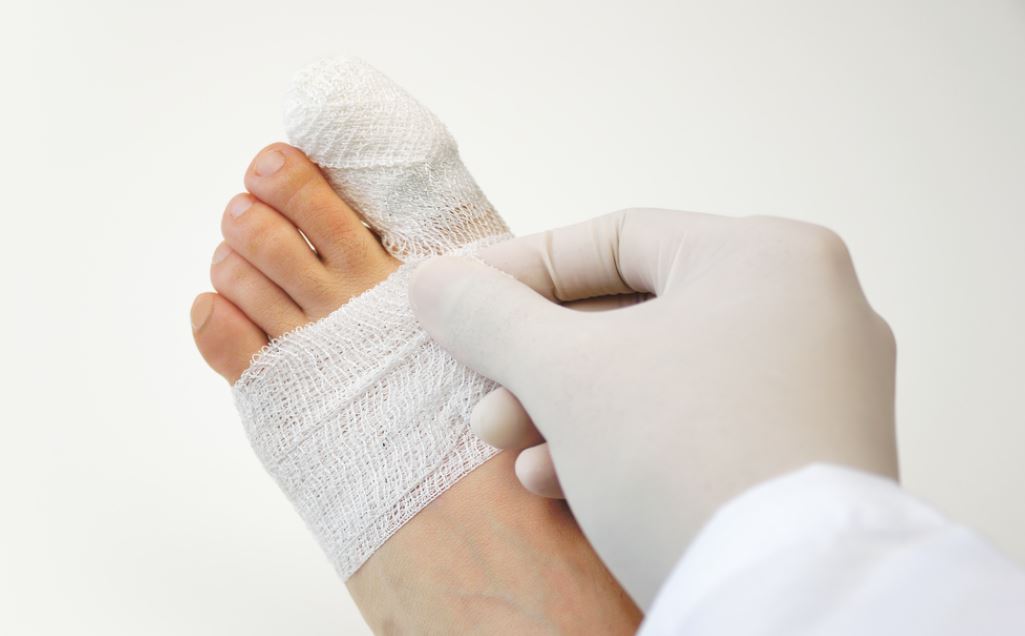
Heloma Molle surgery Recovery: Tips, Timeframe
Recovery from heloma molle surgery can vary based on the specific procedure performed, your overall health, and how well you adhere to your doctor’s post-operative instructions. Here’s some general information about the recovery process:
Timeframe: On average, full recovery from heloma molle surgery usually takes anywhere from a few weeks to a couple of months. However, this can vary depending on individual healing rates and the complexity of the surgery.
Tips for a Smooth Recovery:
Rest and Elevate: Especially in the first few days after surgery, it’s important to rest and keep your foot elevated to reduce swelling and promote healing.
Follow Your Doctor’s Instructions: This may include wound care instructions, when to remove the bandage, when it’s safe to get the surgical area wet, and more.
Take Prescribed Medication: Use any pain medication or antibiotics as directed by your doctor.
Wear Appropriate Footwear: After surgery, you may need to wear a special shoe or padding to protect the surgical site and provide support as you heal.
Attend Follow-Up Appointments: These appointments allow your doctor to monitor your progress, address any concerns or complications, and advise when you can resume normal activities.
Physical Therapy: If recommended by your doctor, engage in physical therapy exercises to regain strength and flexibility in your foot.
Remember, each person’s recovery process is unique. It’s essential to follow your healthcare provider’s instructions and communicate any concerns or questions you have throughout the recovery period.
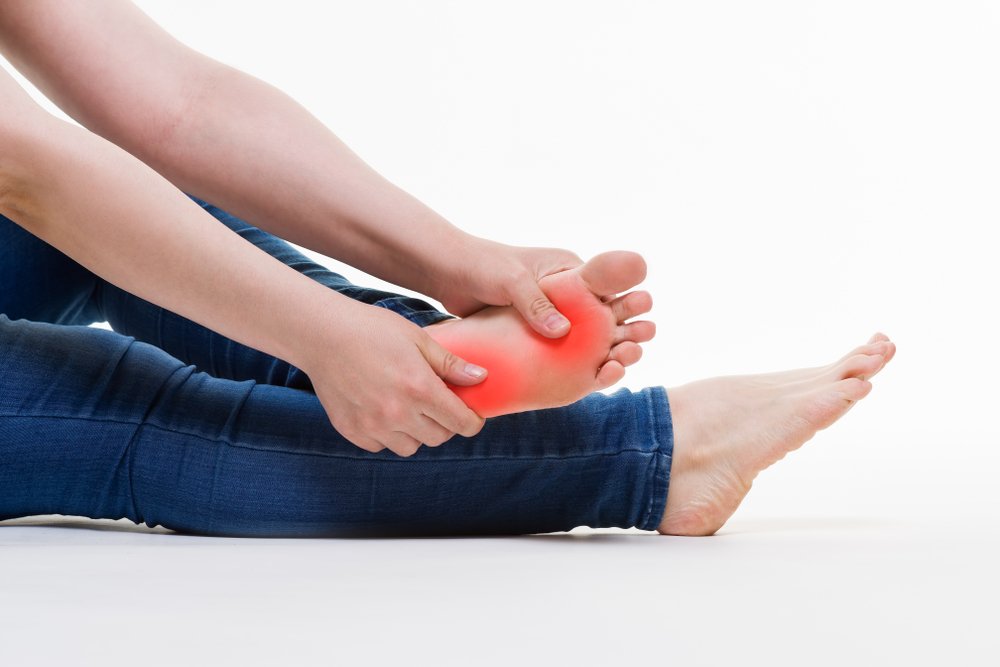
What Are the Causes and Symptoms of Soft Corns?
Soft corns, or heloma molle, are usually caused by prolonged pressure or friction on your foot, especially between your toes. This pressure or friction can be due to several reasons:
Ill-fitting shoes: Shoes that are too tight, narrow, or high-heeled can squeeze your toes and cause pressure points.
Foot deformities: Conditions such as hammertoes or bunions can cause certain parts of your foot to rub against your shoe or other parts of your foot.
Poor gait or biomechanics: The way you walk can put extra pressure on certain parts of your foot.
Lack of socks: Not wearing socks can increase friction between your foot and your shoes.
Symptoms of soft corns include:
Pain and discomfort: You might experience pain when you put pressure on the corn, such as when you’re standing or walking.
Soft, whitish skin between the toes: Soft corns are often whitish and appear macerated (soft and moist), typically located between the fourth and fifth toes.
Inflammation and redness: The skin around the corn might be inflamed and red.
Feeling of walking on pebbles: Some people describe it as feeling like they’re walking on a small stone.
If you’re experiencing symptoms of soft corns, it’s important to see a healthcare provider for an accurate diagnosis and treatment plan.
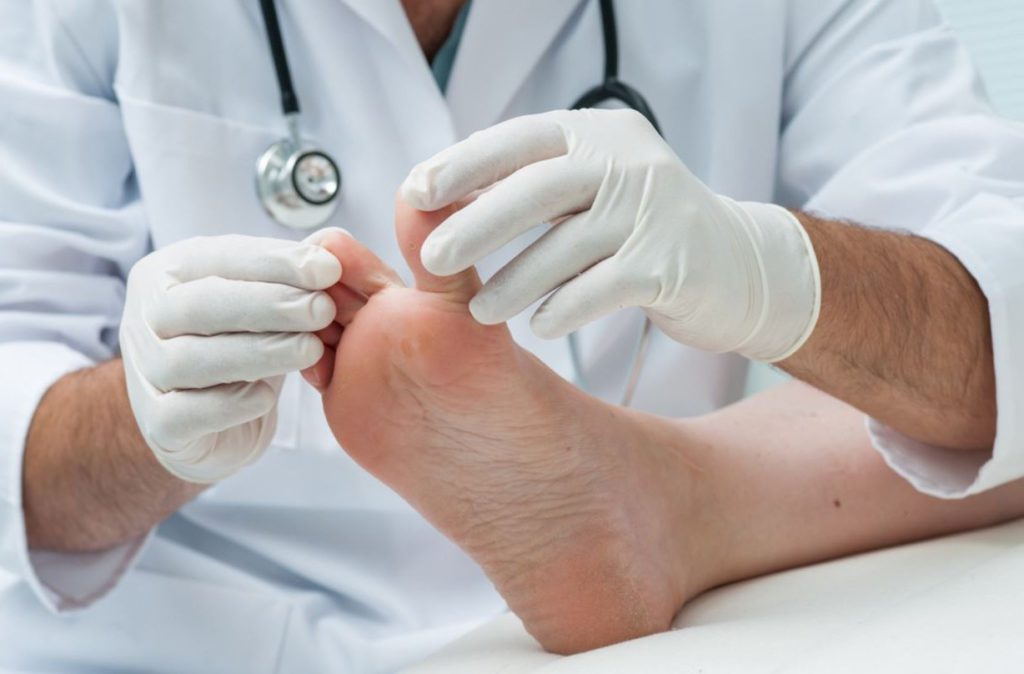
Who Is a Good Heloma Molle Surgery?
A good candidate for heloma molle surgery, or soft corn removal surgery, generally meets the following criteria:
Non-Responsive to Conservative Treatments: The individual has tried conservative treatments, such as using corn pads, changing footwear, or using orthotic devices, but the condition hasn’t improved or has worsened.
Pain and Discomfort: The person experiences significant pain or discomfort that impacts daily activities like walking, working, or exercising.
Good Overall Health: Ideal candidates are in good general health, without conditions that could complicate surgery or recovery, such as uncontrolled diabetes or poor circulation.
Understanding and Expectations: The individual understands the procedure, recovery process, and potential risks, and has realistic expectations about the outcome of the surgery.
It’s important to consult with a healthcare professional or podiatrist who can evaluate your specific condition, discuss your treatment options, and help determine if heloma molle surgery is the right choice for you.
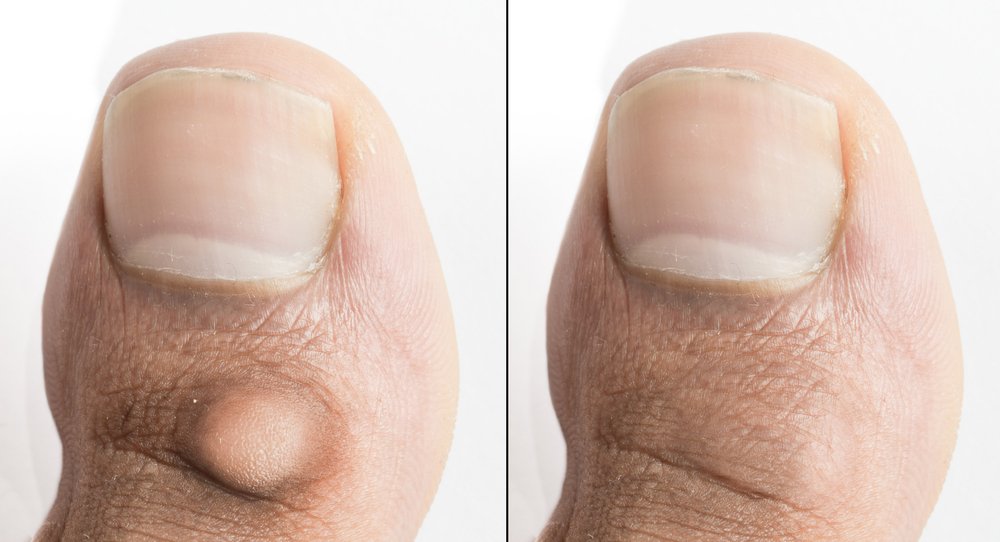
Have a Consultation With Your Surgeon in Miami Before the Operation
Consider booking a consultation at our Luxe Foot Surgery clinic in Miami before deciding on heloma molle surgery. Here, Dr. Lopez DPM, our experienced podiatric surgeon, will explain the benefits, risks, and recovery details of the procedure. This consultation will enhance your understanding of corns and available treatments, allowing Dr. Lopez to recommend the best-personalized approach for you. We value open communication and patient reassurance, ensuring your decision is well-informed and comfortable.
If you want your surgery in Miami, you can contact us in our office from Monday to Friday, from 9 AM to 6 PM, and 9 AM to 5 PM on Friday, or you can fill out an inquiry form for a consultation. We’re looking forward to having you as a patient, and we know you will be satisfied with the level of care and professionalism Luxe Foot Surgery clinic will provide for you.
Frequently asked questions
Heloma molle, also known as soft corns, is a type of foot condition characterized by the formation of thickened skin between the toes, typically the fourth and fifth toes. This is often a result of excessive pressure and friction, usually caused by ill-fitting footwear or a deformity in the toe, such as a bunion or hammertoe.
The term “soft” refers to the moist environment in which these corns typically form. Unlike hard corns that develop on dry, flat surfaces of the skin, soft corns are often white and rubbery in texture due to the sweat trapped between the toes.
Symptoms can include pain when wearing shoes or walking, sensitivity to pressure, and visible thickened or rough skin in the affected area. While there are numerous conservative treatment options available, in persistent or severe cases, heloma molle surgery may be required for complete resolution.
Preparing for heloma molle surgery, or soft corn removal, involves a few steps:
Medical Evaluation: Your surgeon might conduct a complete medical evaluation to ensure you’re healthy enough for surgery. This could include blood tests, a physical exam, or other diagnostic tests.
Medications: Discuss any medications, supplements, or over-the-counter drugs you’re taking with your surgeon. They may advise you to adjust your usual medication routine prior to surgery.
Smoking and Alcohol: If you smoke or consume alcohol, your surgeon might ask you to quit or cut back before surgery as these can interfere with healing.
Footwear: Arrange for comfortable, open-toed shoes to wear after the procedure to avoid putting pressure on the surgical area.
Transportation: As it’s likely you won’t be able to drive immediately after surgery, arrange for a friend or family member to take you home post-procedure.
Home Preparation: Prepare your home for your recovery period. Keep essentials within easy reach and consider setting up a comfortable space where you can elevate your foot.
Remember, every surgical procedure and patient is unique, so always follow the specific instructions provided by your surgeon.
Heloma molle surgery, also known as soft corn removal surgery, is a procedure typically performed by a podiatrist or foot surgeon. While the specifics can vary depending on the individual case and surgeon’s approach, here’s a general outline of what the procedure might involve:
Anesthesia: The surgery begins with local anesthesia to numb the foot and ensure you’re comfortable and pain-free during the procedure.
Removal of Corn: The surgeon uses a scalpel to carefully remove the soft corn and the core of hard skin that’s causing pressure and pain. This process reduces the thickened and inflamed skin.
Addressing the Underlying Cause: If a bony prominence or toe deformity is causing the soft corn, the surgeon might also perform a minor procedure to correct this issue and prevent the corn from recurring. This could involve shaving down a bony area or correcting a toe deformity.
Stitches and Dressing: Once the surgeon has removed the corn and addressed any underlying issues, they’ll close the incision with stitches, if necessary, and apply a sterile dressing to protect the area and promote healing.
Post-operative Care Instructions: After the surgery, you’ll receive specific instructions on how to care for your foot at home, when to schedule a follow-up appointment, and signs of potential complications to watch out for.
Remember, it’s important to discuss the specifics of your surgery and any questions you might have with your surgeon before the procedure. They can provide detailed information tailored to your individual case.
Managing pain and wound care are crucial aspects of recovery following heloma molle surgery. Here are some general guidelines:
Pain Management:
Medication: Your doctor will likely prescribe pain relievers to manage discomfort. Make sure to take these as directed.
Rest and Elevation: Limit your activities, especially in the first few days post-surgery. Keeping your foot elevated can help reduce swelling and alleviate pain.
Wound Care:
Follow your Doctor’s Instructions: Your surgeon will provide specific instructions for wound care, including when and how to clean the area.
Keep the Wound Dry: Until your surgeon says otherwise, avoid getting the wound wet to reduce the risk of infection.
Changing Dressings: You may be instructed to change the dressings on a regular basis. Do this carefully, following your surgeon’s guidelines.
Watch for Signs of Infection: Report any signs of infection to your doctor immediately. These can include increased pain, redness, swelling, or discharge from the wound.
Remember, these are general guidelines. Your surgeon will provide personalized instructions for you to follow. Always adhere to these and reach out to your healthcare provider if you have any concerns or questions.
Foot movement might be limited during the initial recovery period, but that doesn’t mean you can’t do some exercises to maintain mobility. Although weight-bearing isn’t recommended until you heal, simple toe stretches and light physical therapy can do you a lot of good. They can prevent stiffness, which often complicates recovery and getting back to day-to-day activities.
Corns can come back after surgery sometimes. This is usually the case when the treatment doesn’t address the issue that causes corn development – such as foot deformity or extensive pressure and friction at the spot where corns form. Lifestyle changes might also be necessary in order to prevent corns from coming back – this means taking care of your feet and wearing comfortable shoes that fit properly.
Soft corns, or heloma molle, are often painful due to the pressure and friction they endure. They usually form between the toes where the skin is moist, causing the skin to become soft and appear white.
The discomfort arises from the thickened skin of the corn pushing against the underlying nerve endings. When you walk or wear shoes, the pressure and friction on the corn increase, pressing the thickened skin deeper into your foot, which can be quite painful.
Moreover, if left untreated, the continuous pressure can cause the corn to form a hardened core that pushes into deeper skin layers, increasing the discomfort. In some cases, soft corns can also become infected, causing additional pain and inflammation.
- Luxe Foot Surgery. (n.d.). Cause of Heloma Molle in Podiatry. Retrieved from https://www.luxefootsurgery.com/cause-of-heloma-molle-in-podiatry/
- DermNet NZ. (n.d.). Corns and Calluses. Retrieved from https://dermnetnz.org/topics/corn-callus
- American Family Physician. (2002, June 1). Office Procedures: Corns and Calluses. Retrieved from https://www.aafp.org/pubs/afp/issues/2002/0601/p2277.html
Latest Articles
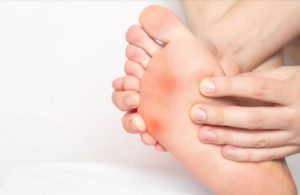
Why Seed Corns Form on Ball of Foot?
Seed corns are small, round clusters of dry bumps that typically form on the ball of the foot and heel
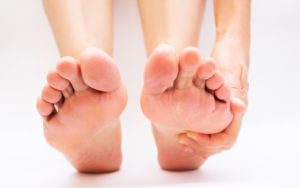
Why Is It So Hard to Get Rid of Seed Corns
If you’ve examined your feet and determined you have seed corns, your next step should be initiating treatment – but
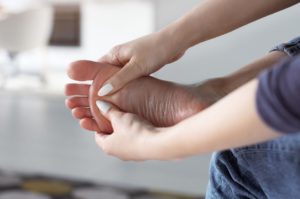
Why Do Seed Corns Keep Coming Back and What to Do About It
Seed corns are patches of dead skin that develop due to rubbing and friction while a person walks. Individuals with
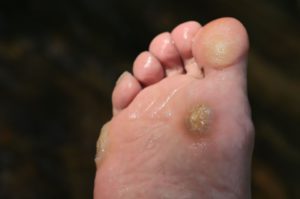
Why Do I Have Corns on the Bottom of My Big Toes
Foot corns are a skin condition that keeps popping up when you least expect it, and somehow it forms on
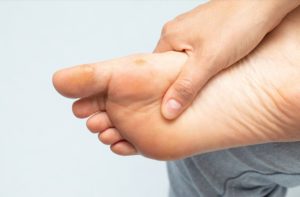
White Spot After Corn Removal
Corns are common foot issues that can be a source of pain and affect the patient’s everyday life. They can

What’s the Best Way to Get Rid of Corns on Toes
Foot corns are a very stubborn skin condition that affects millions of people. While they are virtually harmless, they can
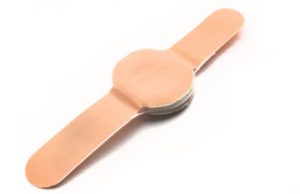
What’s the Best Thing for Corns on Your Toes From a Pharmacy
Before undergoing corn removal surgery, many people decide to try removing corns on their toes with some proven, over-the-counter testament
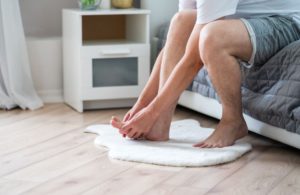
What Shoes Don’t Irritate Seed Corns
We have all experienced seed corns at least once in our life. The unpleasant stubborn, thickened skin on our toes
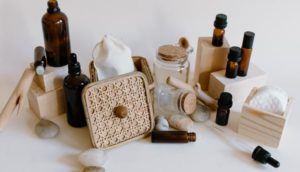
What Oil Removes Corns on the Toes
Dealing with corns usually means feeling slight discomfort in doing everyday activities. Although there is a quick and painless corn
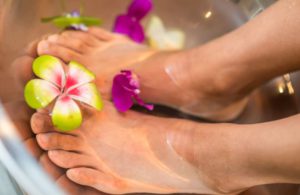
What Is the Best Home Remedy to Soften Hard Pinky Toe Corn?
Hard corns typically form on the edge of the pinky toe. The protruding area is susceptible to friction and pressure,
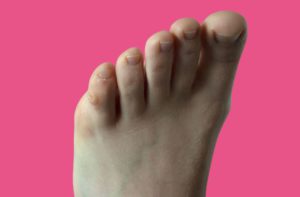
What Is Heloma Durum and What to Do About It?
Numerous people, from athletes to the elderly and individuals with poor blood flow, are prone to getting corns on their
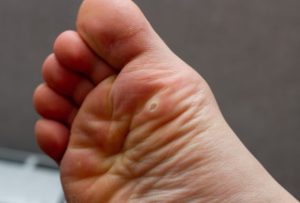
What is a Seed Corn on a Foot? Understanding the Causes and Symptoms of Corns
What is a seed corn on a foot? A specific small-sized foot corn called seed corn can develop as a